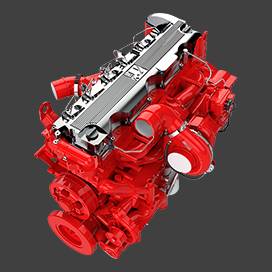Nov . 19, 2024 12:40 Back to list
When Should I Replace Brake Drums for Optimal Vehicle Performance and Safety
When to Change Brake Drums A Comprehensive Guide
Brake drums are an essential component of a vehicle's braking system, particularly in drum brake systems. These components play a critical role in the deceleration and stopping of your vehicle. Understanding when to change your brake drums is vital for maintaining your safety and ensuring the longevity of your braking system.
Signs That Indicate It’s Time to Change Brake Drums
1. Unusual Noises If you hear a grinding or squealing noise when you apply the brakes, it may indicate that brake shoes are worn down and are making contact with the drum. If left unaddressed, this could lead to damage to the drum itself. Therefore, if you hear such noises, it’s essential to inspect the brake drums and consider replacement.
2. Reduced Braking Performance If you notice that your vehicle takes longer to stop or the brakes feel less effective, it could be a sign of worn brake drums. This reduced performance can be dangerous, especially in emergency situations, making it crucial to have your braking system checked.
3. Vibration or Pulsation When you press the brake pedal, if you feel vibrations or pulsation, it can signal that your brake drums are warped. Warped drums can lead to uneven contact with the brake shoes, compromising braking efficiency. It’s advisable to have your brakes examined immediately if you experience this symptom.
4. Visual Inspection Occasionally, you should perform a visual inspection of your brake drums. Look for cracks, chips, or discoloration, which can indicate overheating or wear. If you notice any significant damage, it’s time to replace your brake drums.
when to change brake drums

5. Mileage Consideration Most manufacturers recommend inspecting brake drums after a specific mileage, often between 30,000 to 60,000 miles, depending on driving conditions. If you frequently drive in stop-and-go traffic, tow heavy loads, or drive in hilly areas, you may need to change your brake drums more frequently.
The Importance of Regular Maintenance
Regular maintenance of your braking system is essential. Brake drums should be inspected during routine vehicle maintenance appointments, and if you notice any of the troubling symptoms mentioned above, addressing them sooner rather than later is wise. Ignoring these signs can lead to more significant issues, including total brake failure, which can have catastrophic consequences.
Changing Brake Drums
The process of changing brake drums typically involves lifting the vehicle, removing the wheels, and disconnecting the drum from the braking assembly. For those who are not mechanically inclined, it’s advisable to seek professional assistance to ensure the job is done correctly. Utilizing high-quality replacement parts is also essential for optimal performance.
Conclusion
Understanding when to change your brake drums is vital for ensuring safe driving conditions. By keeping an eye out for telltale signs such as unusual noises, reduced braking performance, vibration, and regular mileage checks, you can maintain your vehicle’s braking system effectively. Regular inspections and prompt replacements will not only enhance your vehicle’s performance but also significantly contribute to your safety on the road.
-
HINO Industrial Solutions - ¡Ң���ຽ��е��������˾ | Advanced Technology&Reliability
NewsJul.13,2025
-
HINO Industrial Efficiency-Jiangsu Hino Industrial|Productivity Optimization&Cost Reduction
NewsJul.12,2025
-
HINO-¡Ң���ຽ��е��������˾|Advanced Industrial Solutions&Energy Efficiency
NewsJul.12,2025
-
Premium Brake Drum Iveco – Durable Drum Brake Drum & Brake Shoe Solutions
NewsJul.08,2025
-
High-Performance Brake Drum Liza for Enhanced Safety Reliable Drum Brake Drum & Brake Shoe Solutions
NewsJul.08,2025
-
High-Quality Brake Drum MAZ – Durable Drum Brake Drum & Brake Drum and Brake Shoe for Optimal Performance
NewsJul.07,2025
